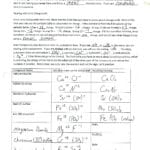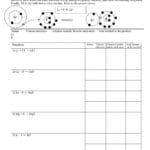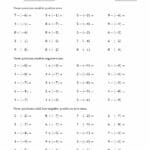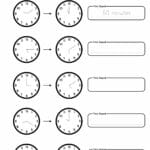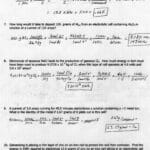Mastering Ionic Bonds: Free Printable Worksheets, Explained
Ionic bonding, a fundamental concept in chemistry, can seem daunting at first. But with the right resources, like well-designed worksheets, it becomes much easier to grasp. This guide explores the world of ionic bonding worksheets, specifically tailored for GCSE and IGCSE students, providing insights into their effective use and highlighting valuable online resources. Downloadable worksheets, often with answer keys, offer targeted practice on crucial topics like dot-and-cross diagrams, naming compounds, and understanding ionic structures. They’re like having a personal chemistry tutor, guiding you step by step towards mastering this essential concept.
Why Ionic Bonding Worksheets Are Essential for GCSE & IGCSE Prep
Ionic bonding worksheets provide structured practice, aligning perfectly with GCSE and IGCSE curricula. These worksheets cover everything from basic electron transfer to complex ionic structures and their properties. Here’s a breakdown of their benefits:
- Targeted Practice: Focus on specific skills like drawing dot-and-cross diagrams, writing chemical formulas, and predicting ion charges.
- Self-Assessment: Worksheets with answer keys allow students to check their work, identify areas for improvement, and build confidence.
- Varied Learning Styles: Different worksheet formats cater to diverse learning styles, offering multiple-choice questions, short answer exercises, and diagram-based activities.
- Exam Preparation: Many worksheets include exam-style questions, providing invaluable practice for GCSE and IGCSE assessments.
- Accessibility: Free printable worksheets are readily available online, making them a convenient and cost-effective resource for both students and teachers.
Choosing the Right Worksheet: A Guide for Students and Teachers
Not all worksheets are created equal. Here’s what to look for when selecting ionic bonding worksheets:
- Relevance to Exam Board: Ensure the worksheet aligns with the specific exam board (e.g., AQA, Edexcel) your students are following. Tes offers resources aligned with AQA.
- Appropriate Difficulty: Choose worksheets that match your current understanding. Look for scaffolded worksheets for foundational learning and extension questions for advanced learners.
- Varied Question Types: A mix of multiple-choice, short-answer, and diagram-based questions provides a more comprehensive learning experience.
- Clear Instructions and Explanations: Well-written instructions and concise explanations ensure students understand what is expected.
- Answer Keys: Worksheets with answer keys are essential for self-assessment and identifying areas where further practice is needed.
How to Maximize Your Learning with Ionic Bonding Worksheets
Here are some strategies for effectively using ionic bonding worksheets:
1. Visualize Electron Transfer: Dot-and-Cross Diagrams
Dot-and-cross diagrams are visual representations of electron transfer, a key aspect of ionic bonding. Worksheets focusing on these diagrams, like those found on Tes, help students grasp this abstract concept by visualizing how electrons move between atoms.
2. Predict Formulas and Properties: Applying Your Knowledge
Ionic bonding worksheets challenge students to predict chemical formulas based on ion charges and to understand how ionic structures influence properties like melting point and solubility. Resources like MrKremerScience provide excellent practice in formula writing and charge identification.
3. Exam-Focused Practice: Getting Ready for the Big Day
Use worksheets with exam-style questions to familiarize yourself with the format and difficulty level of GCSE and IGCSE assessments. This targeted practice builds confidence and reduces exam anxiety.
4. Systematic Problem-Solving: A Step-by-Step Approach
Encourage students to show their work and explain each step in problem-solving. This reinforces understanding and promotes a methodical approach to tackling chemistry challenges.
5. Integrate Worksheets into Revision: Consistent Practice for Retention
Regularly working through worksheets reinforces concepts and improves long-term retention. Incorporate them into your study routine for consistent practice and better recall during exams.
6. Real-World Connections: Making Chemistry Relevant
Connect ionic bonding to everyday examples like table salt (NaCl). This makes the topic more engaging and demonstrates the practical relevance of chemistry. The Science Teacher provides lesson ideas that can help bridge theory and real-world application.
Delving Deeper: Exploring the Nuances of Ionic Bonding
While GCSE and IGCSE focus on the fundamentals, it’s important to acknowledge that our understanding of ionic bonding is constantly evolving. Some research suggests that the classic model of complete electron transfer might not always capture the full complexity of these bonds. Factors like polarization, where electron clouds are distorted, may also play a significant role, influencing bond strength and properties. Exploring these nuances can further enrich your understanding of ionic bonding. RSC Education offers resources that encourage deeper exploration of ionic structures and bonding for 14-16 year olds.
Exploring Available Resources: A Comparative Look
Here’s a comparison of some excellent online resources for ionic bonding worksheets:
| Resource | Features | GCSE/IGCSE Focus | Answer Keys |
|---|---|---|---|
| Tes | Worksheets, including dot-and-cross diagrams, aligned with AQA exam board. | Yes | Yes |
| MME Revise | Revision materials and questions covering ions, bonds, diagrams, structures, and properties. | Yes | Varies |
| MrKremerScience | Worksheet with examples and a chart covering naming, Lewis diagrams, charge, and formula identification. | Yes (implied) | Likely |
| The Science Teacher | Lesson ideas and worksheets for 11-16 year olds, promoting deeper understanding. | Yes | Varies |
| RSC Education | Resources for reviewing and developing understanding, including a scaffolded writing activity on structure. | Yes | Varies |
For solving literal equations, which can be related to calculating ion charges, this literal equations worksheet provides additional practice and a step-by-step guide.
By leveraging these resources and incorporating the strategies outlined in this guide, you can transform your understanding of ionic bonding and excel in your GCSE and IGCSE chemistry studies.
- Unlock Water’s Symbolism: A Cross-Cultural Exploration - April 20, 2025
- Identify Black and White Snakes: Venomous or Harmless? - April 20, 2025
- Unlocking Potential: Origins High School’s NYC Story - April 20, 2025
